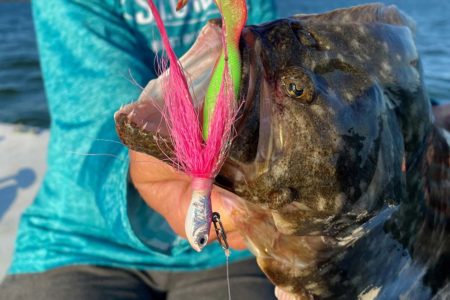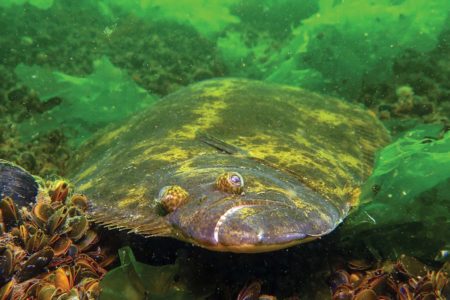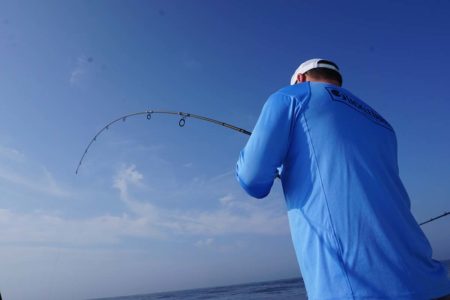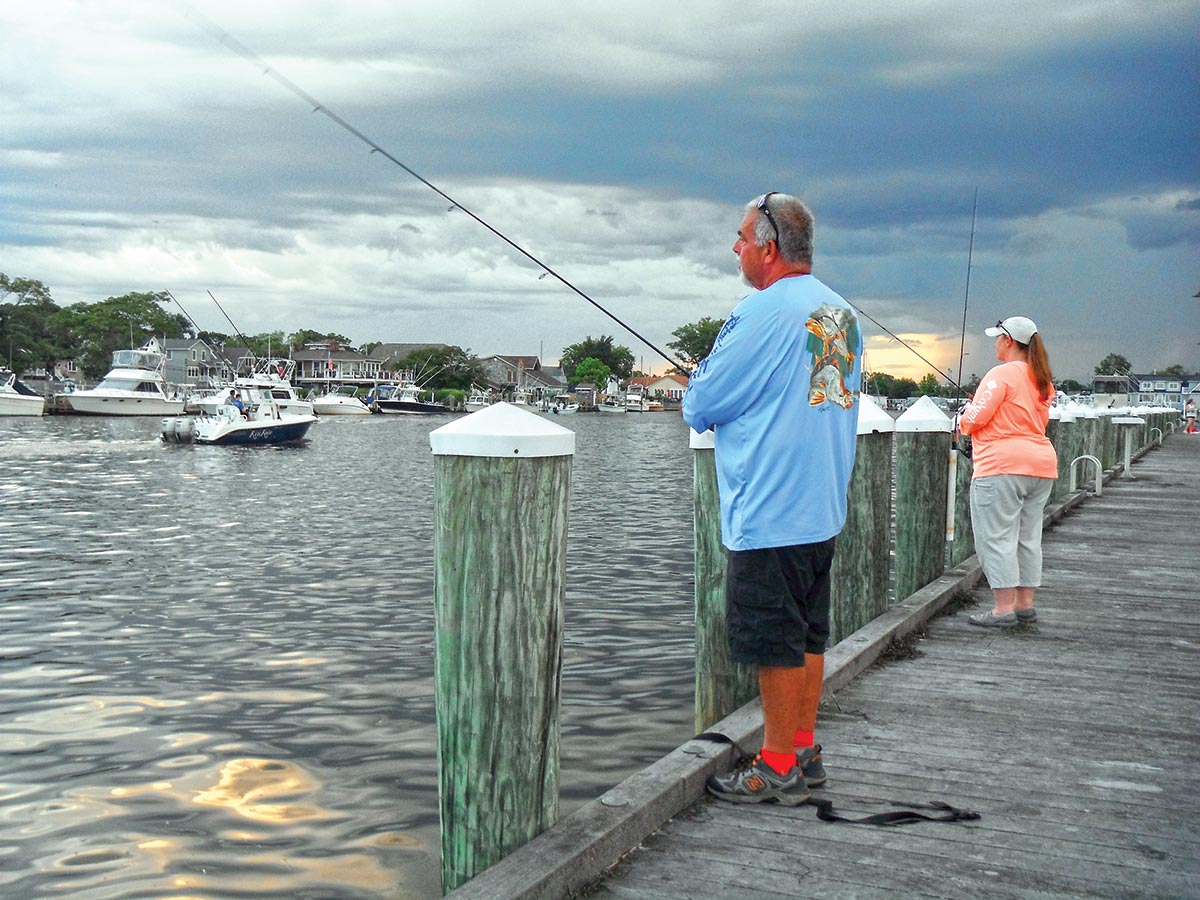
A far cry from traditional surf fishing hotspots, these areas offer some very good opportunities not far from home.
There is not much good you can say about the coronavirus pandemic but if you search hard enough, you can probably find a thing or two. From a fishing perspective, stay at home and stay local policies actually helped open my eyes to long forgotten opportunities just minutes from home. Foot/ankle surgeries over the last couple of years also contributed to rediscovering these close to home opportunities since I was limited by where and how I was able to fish.
These are not locations that conjure up romantic images of crashing surf and going toe to toe with a big striper. For many, they are places where we cut our teeth on the fishing game as youngsters when walking or riding a bike was the deciding factor on where we fished. Eventually, we outgrew those places and “graduated” to boats, beach buggies and loftier goals. Very rarely do most of us go back to our roots unless it is to introduce youngsters to the sport through snappers, blowfish and the like. Surf fishermen are more likely to search out these areas, while those who own boats often feel the need to justify owning a boat by doing all of their fishing from it.
Not Your Typical Hotspot
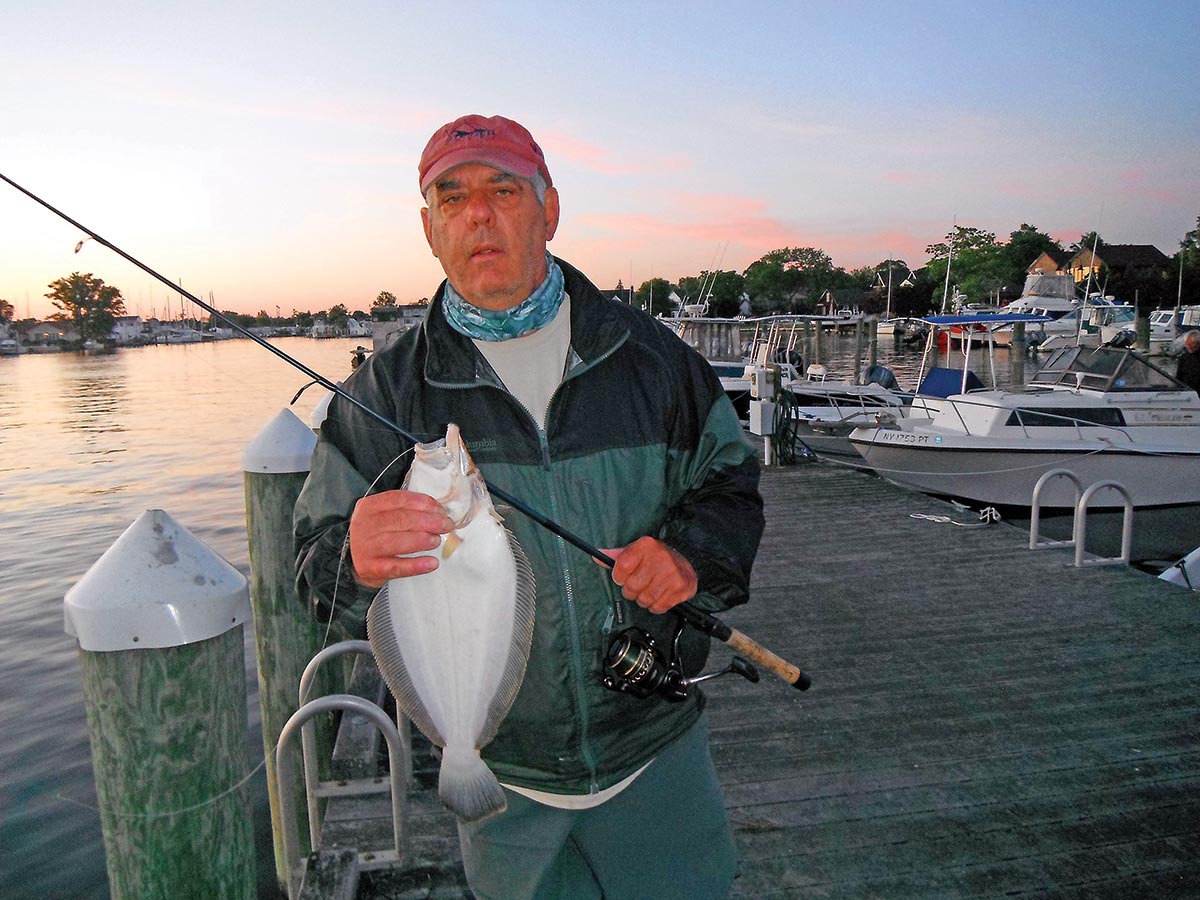
While you will hear very little about these docks and piers that sit far from the typical places you would normally target species like striped bass, bluefish, fluke and weakfish, the reality is that some of these areas can produce surprisingly good fishing for these species. Where I live on Long Island, the South Shore’s mainland creeks have long been a hotbed for weakfish action that few people are aware of. Weakfish are one of the most unpredictable species that swim in our waters but when their numbers are up, the fishing can be very good and the sizes impressive in these back bay canals and marinas. My biggest from the docks is a 14 pounder, but I’ve pulled numerous double digit yellowfins from between docked boats and pilings over the years. I’m sure that the same creeks and canals that flow into Barnegat Bay offer similar potential when weakfish numbers are up.
Those surgeries I mentioned and then the COVID-19 pandemic reopened another good fishery for me. As a 12 and 13 year old, I worked for a local marina selling bait and gassing up boats. At the end of the gas dock was a floating dock used to keep live bait. During the course of my work day, I would deadstick a live killie with a half-ounce bass sinker off the floating dock with my little spinning rod. I can’t tell you how many fluke I caught off of that dock, only that it was enough for my father to keep his work crew supplied with fresh fish dinners most weeks. While I’ve caught a fluke here and there in these types of areas while targeting weakfish, it wasn’t until recently that I began targeting them again, quite by accident. Frequent bites from fluke while targeting stripers and weakfish encouraged me to shift my efforts to the flatfish last August. I caught fluke into November, a time when the flatties “should” have been out in the ocean working their way out to their offshore wintering grounds. The last fluke I caught in a mainland canal was during the last week of October when conventional thinking would tell you that fish had no business being there. I’ve also found some surprisingly good fishing for fluke, bass, blues and weakfish inside boat basins and marinas in close proximity to inlets and deep water channels.
Bait And Structure
So why are bass, blues, weakfish and fluke in these areas, or should I say why shouldn’t they be in these areas? For the same reasons that all productive areas attract fish – food and structure. Docks, pilings and bulkheads equate to structure. They often contain another form of “structure” that plays big in the productivity of these areas – lights – but more on that later. Where food is concerned, many of the fluke and weakfish I’ve caught on the docks are feeding heavily on grass and sand shrimp which collect along the bulkheads. Fluke that I have filleted were stuffed with tiny shrimp. That 14-pound weakfish I mentioned earlier was cruising slowly along the bulkhead sucking down grass shrimp late at night. I stepped back a couple of feet, dropped a soft plastic ahead of her and she sucked it in.
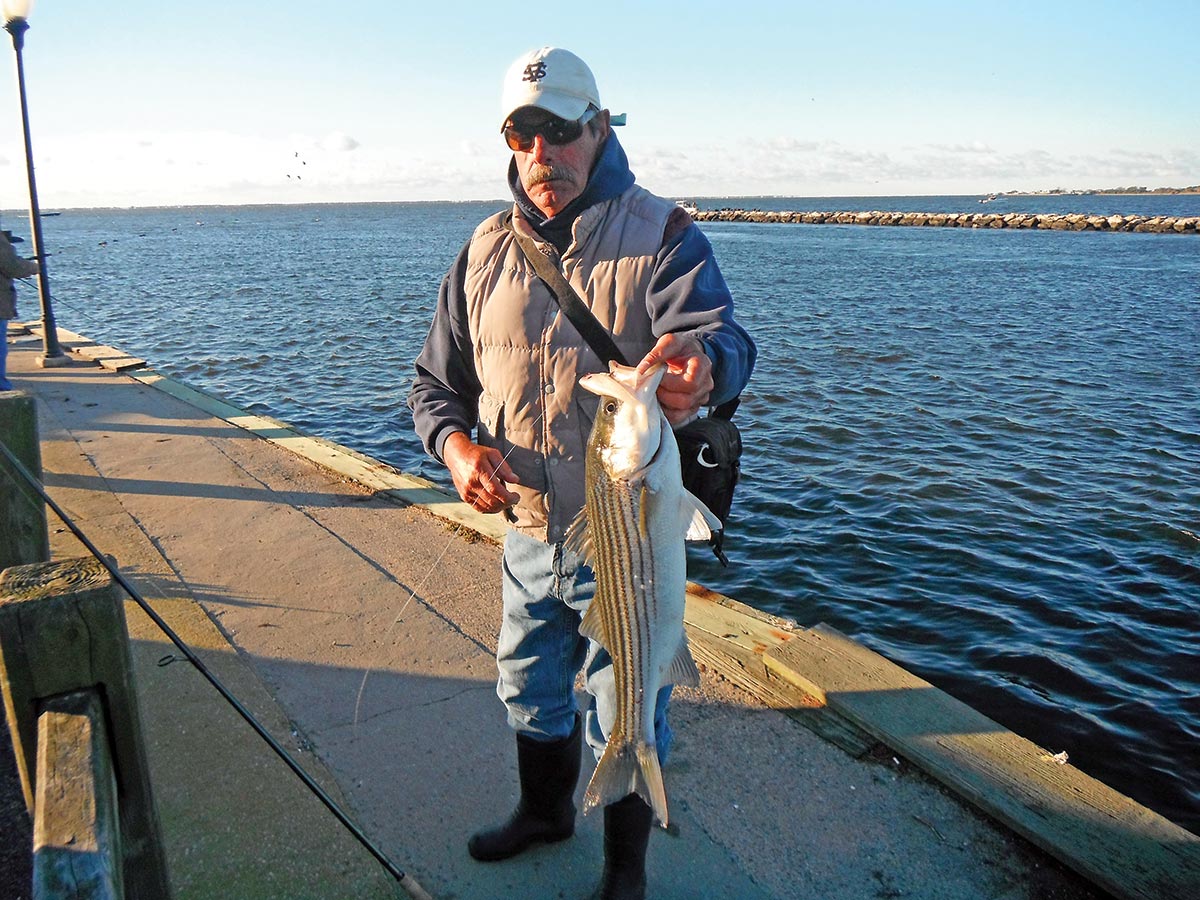
Boat basins, marinas, creeks and canals are often rich in a variety of forage in the form of crabs, spearing, peanut and adult bunker, killies, small blowfish, white bait, mullet and eels to name a few. It just makes sense that such a smorgasbord would attract gamefish. I’ve seen boat basins so full of bait that it appeared you could walk on them. One night during the last peak in the striper population, I found the boat basin harboring Long Island’s largest party boat fleet turned white by stripers gorging on bay anchovies. Those fish saved the night as our original destination was rendered unfishable by a nor’easter raking the Island. A former Fisherman staffer who also did some time mating on a Connecticut party boat docked deep in the Thames River used to catch big stripers from the docked boat at night, far from the fish laden rips of The Race and Sluiceway.
An abundance of small stripers resulting from three good recent year classes, combined with a booming bunker population, has generated some very good striper action in areas not typically thought of as places you would seek stripers. Large numbers of peanut bunker clogging mainland rivers and creeks have inspired some very good light tackle striper fishing from town and village docks, and marshy banks the past few years. There is some irony in seeing a bunch of tricked out four- wheel drive vehicles and rods sporting Van Staal reels in a parking lot where the targeted species are typically blowfish, snappers and crabs.
Now about lights. Stationary lights like street and dock lights shining on the water can have a magical effect on marine life. Water that is void of life in daylight can come alive with all types of baitfish, as well as crabs, eels and squid. This smorgasbord is a magnet for gamefish and can fuel some very good fishing for all of the species mentioned, including fluke. In the daylight, it is often necessary to pause and even drop back when a fish picks up your lure. Once the lights go on, I’ve found the summer flatties to be much more aggressive, and have even had a couple of fish come up and grab my jig near the surface as I was lifting it out of the water. Generally speaking, at least where stripers and weakfish are concerned, most of the activity in these lighted areas will occur late at night when the waters are quiet and there is little or no activity on the docks.
Also, under these conditions don’t be surprised if you find yourself confronted with a cinder worm hatch and stripers busily slurping them from the surface. I have had this happen twice since last season and was totally unprepared on each of those nights. Bass can become super fussy under these conditions but very small, thin profile soft plastics or streamers will often draw their attention. If the fly rod is not an option, fish the soft plastic on a plain hook a couple of feet behind a bobber. The Gulp lineup includes some small worms that might be just the ticket when skewered on a light wire hook.
Tackle And Techniques
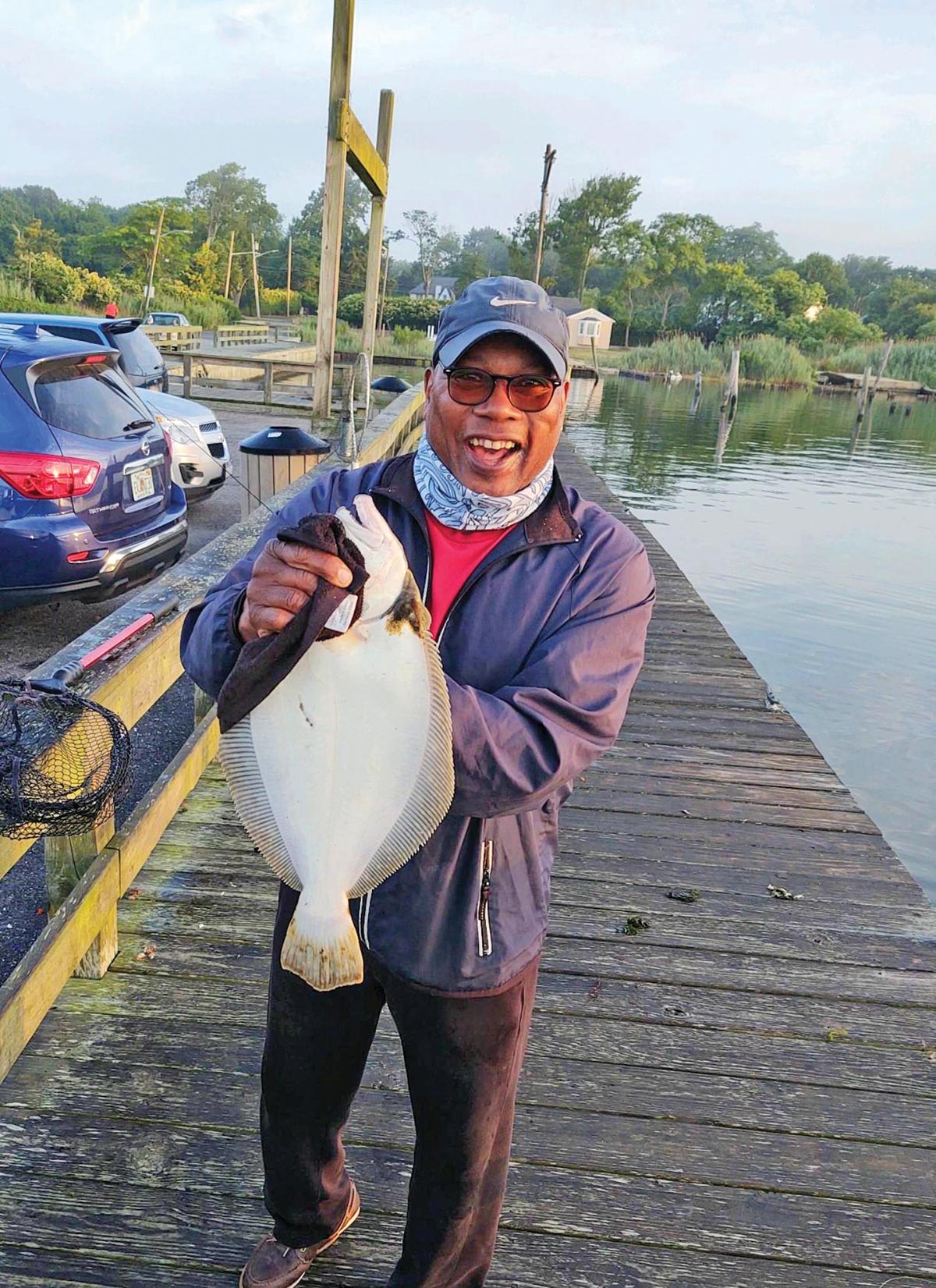
When it comes to tackle, it all depends on the fish you are targeting, but for the most part we are talking light spinning or baitcasting outfits spooled with 10 or 12-pound test braid. These are ideal for fluke, weakfish, school bass and cocktail blues, and perfect for delivering payloads ranging from ¼ to 1 ounce. In locations where bigger bass or blues are feeding on bigger baitfish like adult bunker, and larger plugs might be in order, medium action rods of 7 to 9 feet with matching reels and 20-pound braid will get the job done. In what are often calm and quiet waters, I limit my leader to 20-pound test fluorocarbon or pink Ande monofilament and prefer to tie direct. If you insist on a snap, go as small as possible.
I keep a “dock bag” that consists of a selection of lead head jigs from ¼ to ¾ of an ounce, bucktails from 3/8 to 1 ounce, a few topwater plugs in the ¾ to 1-ounce range, a couple of 4-1/2-inch swimming plugs and an assortment of soft plastics. Everyone has their favorite soft plastics and most are effective when presented properly, whether it be curly tail grubs, zoom flukes, Fin-S Fish, Bass Assassins Cocahoe Minnows or any of the many other varieties flooding the soft plastic market. Swim shads in 4 and 5-inch sizes are a must, especially when peanut bunker are the primary forage. When it comes to fluke and weakfish, scented baits can make a world of difference. Gulp, FishBites and ZMan have all proven very effective on both of these species. Personally, I favor the curly tail grub, but I’ve caught both species on a wide variety of plastic baits, including shrimp, paddle tails, sand eel and jerk baits.
Something I discovered when targeting fluke along docks and bulkheads, especially well established structures rich in marine growth, is to keep your offering close to the structure. Over the past year and a half, 90 percent of the fluke I’ve caught have been within three feet of the bulkhead. I simply strip out enough line to get down to the bottom and slowly walk or cast parallel to the dock while gently jigging the lure up and down. The reason this approach works so well for me is the fish are feeding on the shrimp clinging to the structure. You may have a different situation depending on where you fish, so it always pays to cover the area with casts, as well as working your lure tight to the dock or pier.
So while these locations may not be rich in aesthetics and are a far cry from traditional surf fishing hotspots, they do offer some very good opportunities to score some of our favorite inshore species not far from home. Spend some time exploring the options in your area and you may be very surprised at just how productive some of those obscure locations can be.
